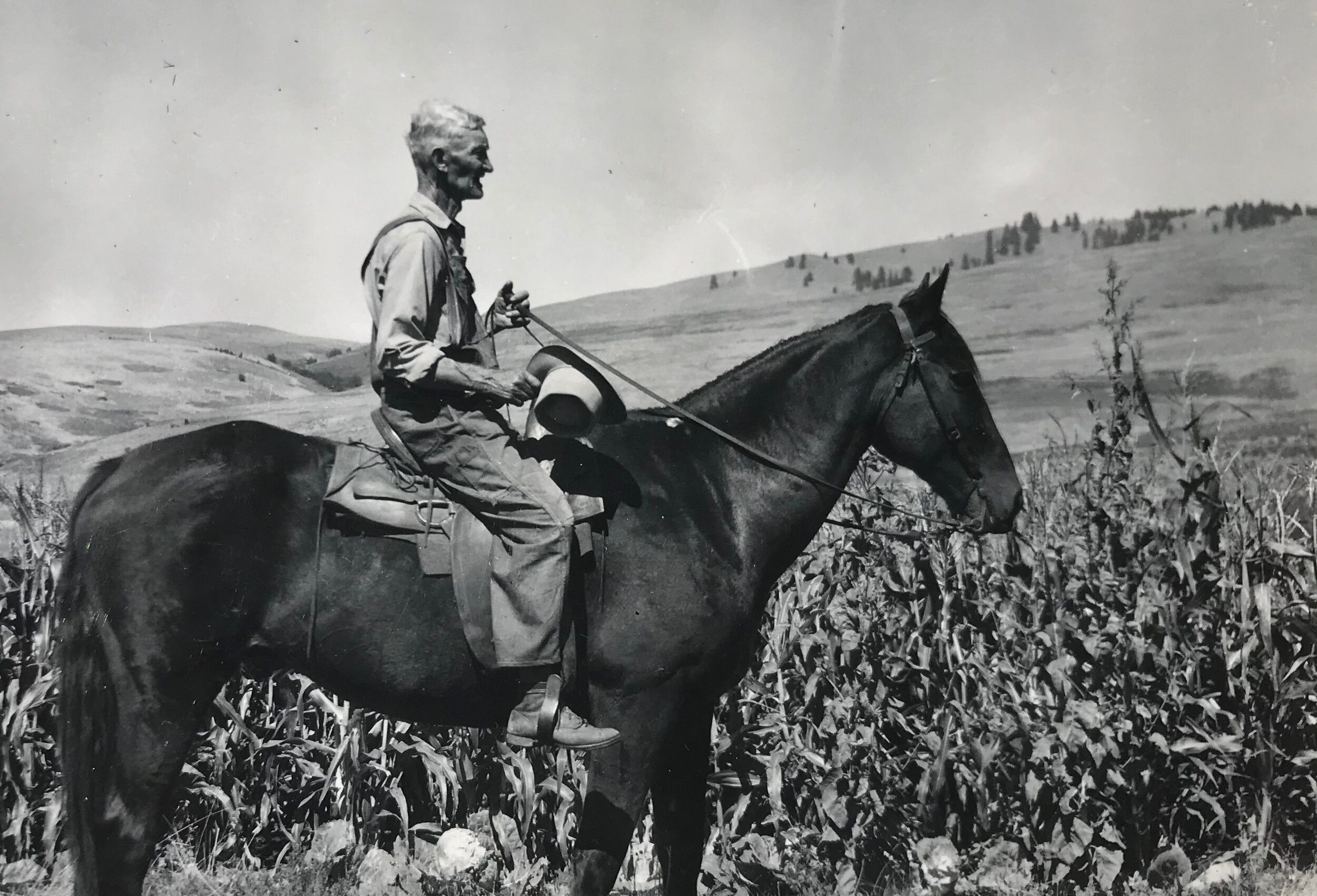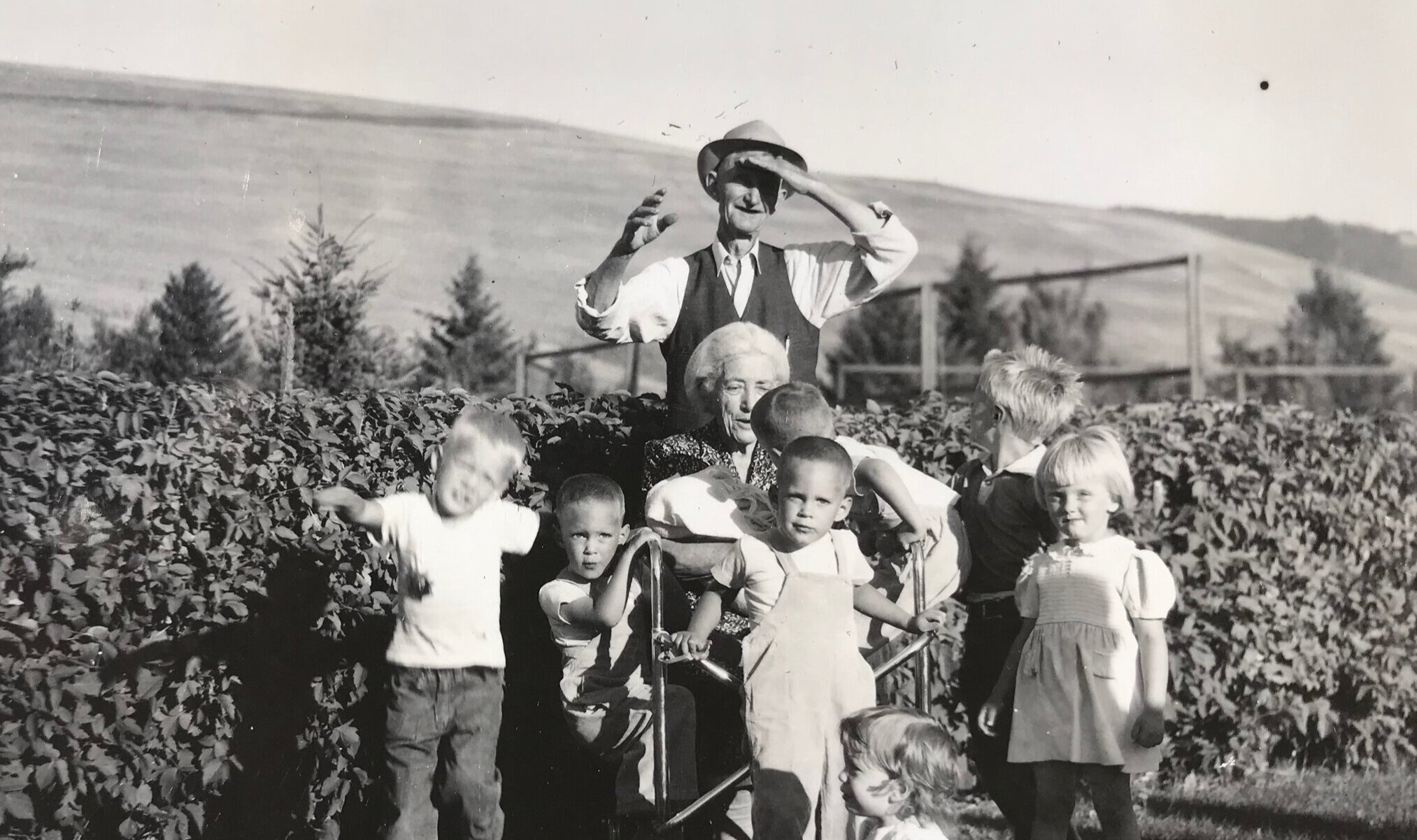1889 was the year that Montana became a state and that the remaining Bitterroot Séliš were forced to sign an agreement to move from the Bitterroot Valley to, what was then called, the Flathead Indian Reservation. It was also the year that Ray and Luella Moon filed their claim on 160 acres of land under the Homestead Act and began the homesteader's work of proving up. In those first five years, the Moons built a small claim shack and a small barn. They built miles of fence and planted one, then two, then five, then ten, then thirty acres of crops. Like many homesteaders in Montana, they planted an orchard of apple and cherry trees. After five years of hard work, the Moons gained title to the land, sold it to relatives George and Helen Moon, and continued their move west to Seattle, Washington, and later Monterey Bay, California.
In 1907, the Randolph family purchased the site. Unlike the Moons, the Randolphs intended to stay and make a living on this small parcel of bunchgrass prairie. Emma Randolph kept a flock of laying hens, at one point selling 55 dozen eggs per week. Bill Randolph grew vegetables that he brought to town with his Casaba wagon to sell to stores and families in Missoula. The Randolphs kept dairy cows and raised cattle for beef. They kept bees and harvested honey and continued to harvest apples from the trees Ray Moon planted. Like other families homesteading the North Hills, they prospected and developed a small coal mine on the property. At one point, they pulled enough coal out of the mine to hire miners. In 1916 at the age of 13, Robert Randolph, the middle of the three boys, kept a small journal chronicling his life at the farm. Theirs was a highly diversified, small-scale farmstead. When the Great Depression hit, the Randolphs were able to feed themselves, as well as relatives who stayed with them during those hard years.
The Randolphs farmed the property until Bill and Emma died in the late 1950s. Bill Randolph Jr., the youngest of their three sons, continued living at the Homestead. Working at times as a gate-keeper for the stockyard, Bill tended several rhubarb patches and a small herd of goats at the Homestead. He resided here, at the place of his birth, until he passed away in 1995. Two years before his death, Bill Randolph worked with Five Valleys Land Trust to put a conservation easement on the property in 1993 thereby protecting the site in perpetuity for its open space, ecological, historic, agricultural and scenic values.
References and to learn more:
DeSilvey, Caitlin. (2002). Butterflies and Railroad Ties: A History of a Montana Homestead, 2nd Ed. Missoula, MT: Hill Homestead Preservation Coalition, North Missoula Community Development Corporation.
DeSilvey, Caitlin. (2005). Salvage Rites: Making Memory on a Montana Homestead. (Doctoral dissertation.) Open University, United Kingdom.
Five Valleys Land Trust. (2021). Moon-Randolph Homestead. FVLT Project. https://www.fvlt.org/projects/moon-randolph-homestead




